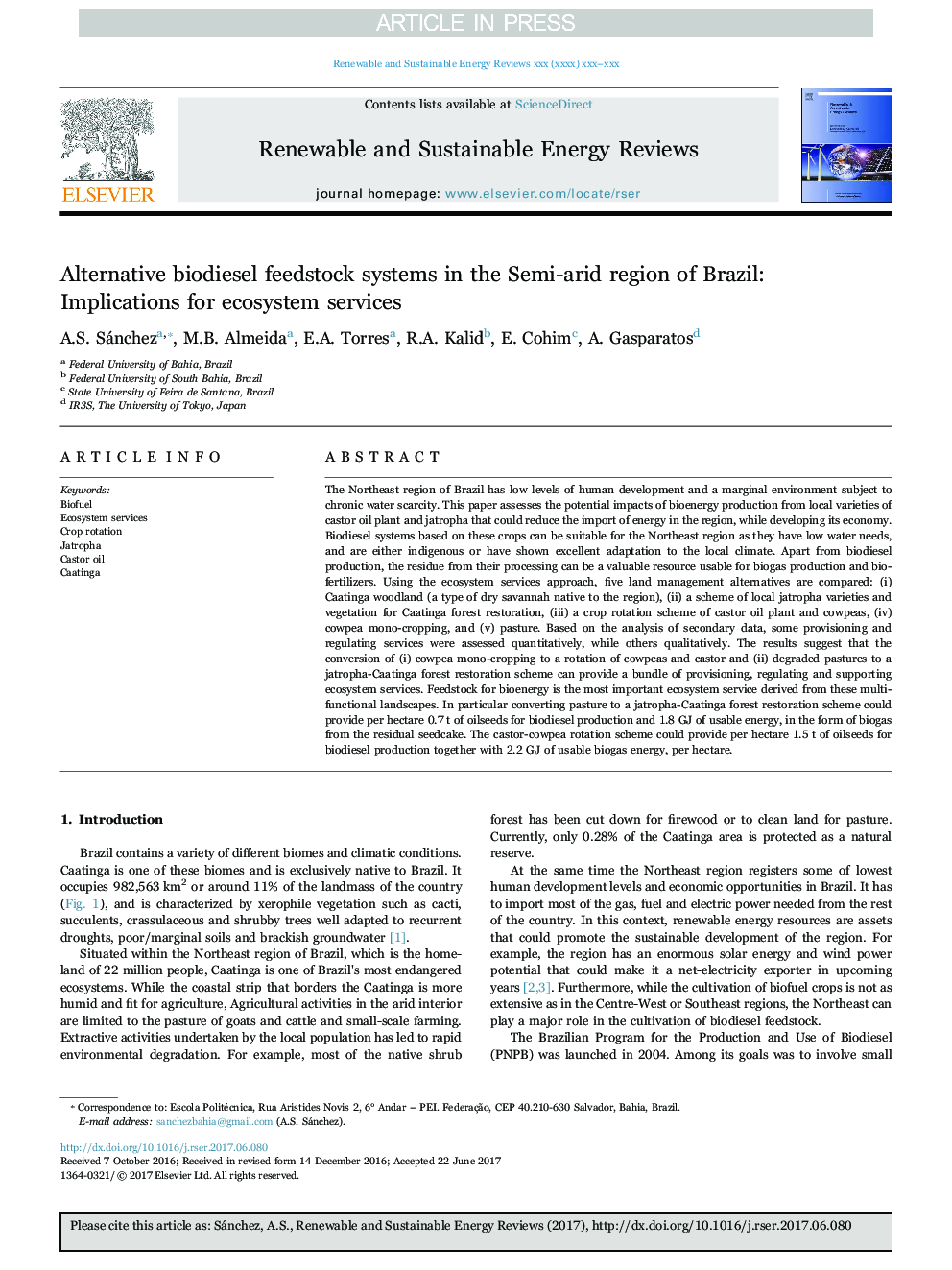| کد مقاله | کد نشریه | سال انتشار | مقاله انگلیسی | نسخه تمام متن |
|---|---|---|---|---|
| 8112439 | 1522305 | 2018 | 15 صفحه PDF | دانلود رایگان |
عنوان انگلیسی مقاله ISI
Alternative biodiesel feedstock systems in the Semi-arid region of Brazil: Implications for ecosystem services
ترجمه فارسی عنوان
سیستم های جایگزین بیودیزل در منطقه نیمه خشک برزیل: پیامدهای خدمات اکوسیستم
دانلود مقاله + سفارش ترجمه
دانلود مقاله ISI انگلیسی
رایگان برای ایرانیان
کلمات کلیدی
موضوعات مرتبط
مهندسی و علوم پایه
مهندسی انرژی
انرژی های تجدید پذیر، توسعه پایدار و محیط زیست
چکیده انگلیسی
The Northeast region of Brazil has low levels of human development and a marginal environment subject to chronic water scarcity. This paper assesses the potential impacts of bioenergy production from local varieties of castor oil plant and jatropha that could reduce the import of energy in the region, while developing its economy. Biodiesel systems based on these crops can be suitable for the Northeast region as they have low water needs, and are either indigenous or have shown excellent adaptation to the local climate. Apart from biodiesel production, the residue from their processing can be a valuable resource usable for biogas production and bio-fertilizers. Using the ecosystem services approach, five land management alternatives are compared: (i) Caatinga woodland (a type of dry savannah native to the region), (ii) a scheme of local jatropha varieties and vegetation for Caatinga forest restoration, (iii) a crop rotation scheme of castor oil plant and cowpeas, (iv) cowpea mono-cropping, and (v) pasture. Based on the analysis of secondary data, some provisioning and regulating services were assessed quantitatively, while others qualitatively. The results suggest that the conversion of (i) cowpea mono-cropping to a rotation of cowpeas and castor and (ii) degraded pastures to a jatropha-Caatinga forest restoration scheme can provide a bundle of provisioning, regulating and supporting ecosystem services. Feedstock for bioenergy is the most important ecosystem service derived from these multi-functional landscapes. In particular converting pasture to a jatropha-Caatinga forest restoration scheme could provide per hectare 0.7Â t of oilseeds for biodiesel production and 1.8 GJ of usable energy, in the form of biogas from the residual seedcake. The castor-cowpea rotation scheme could provide per hectare 1.5Â t of oilseeds for biodiesel production together with 2.2 GJ of usable biogas energy, per hectare.
ناشر
Database: Elsevier - ScienceDirect (ساینس دایرکت)
Journal: Renewable and Sustainable Energy Reviews - Volume 81, Part 2, January 2018, Pages 2744-2758
Journal: Renewable and Sustainable Energy Reviews - Volume 81, Part 2, January 2018, Pages 2744-2758
نویسندگان
A.S. Sánchez, M.B. Almeida, E.A. Torres, R.A. Kalid, E. Cohim, A. Gasparatos,
